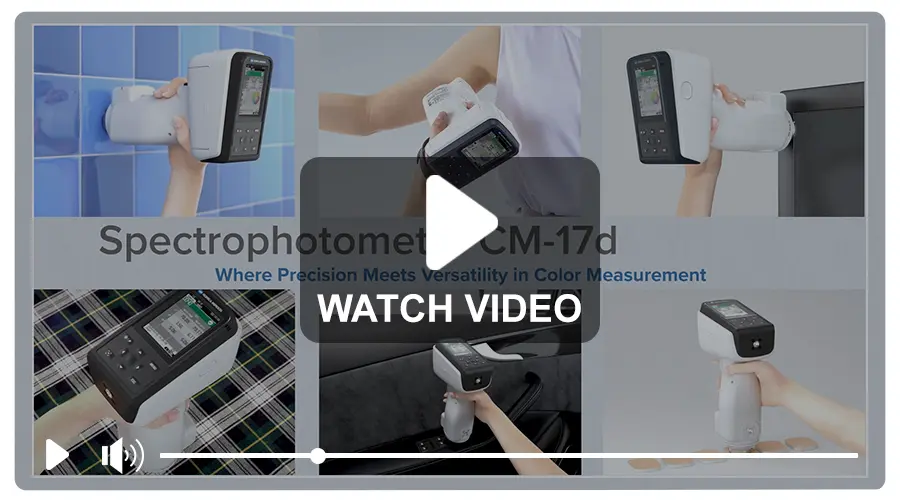Ensuring Accuracy and Consistency of Screen Printing with Spectrophotometers

Effective visual communication and branding are crucial in today’s fast-paced world, where attention spans are limited and individuals form judgments quickly. From the captivating logo and design to the concise information and texts on your favorite product, visual elements play a vital role in shaping perceptions, conveying messages, and connecting with people. Screen printing, or serigraphy, is one of the techniques widely used to transfer these visual elements onto a diverse range of products or surfaces. This technique is highly adaptable and is well-suited to a multitude of substrates, including paper, fabric, glass, plastics, and more. This versatility offers flexibility in terms of design, substrate, and ink choices, making it a preferred choice for a wide range of applications, such as promotional products and merchandise, industrial and functional printing, packaging, labels, signage, graphics, and apparel. However, achieving precise and consistent color reproduction in screen printing presents unique challenges, making color measurement indispensable.
One of the primary reasons for the importance of color measurement is due to the process’s variability. Unlike digital printing, where colors are generated using precise numerical values, screen printing involves certain manual processes and is subject to physical factors that can cause inconsistencies. Factors such as ink viscosity, substrate texture, curing conditions, etc., can all influence the final color output. If these factors aren’t measured and controlled, the colors of the screen-printed elements can vary in shade, hue, and intensity from one batch to another. Therefore, it is essential to have a reliable color measurement system in place to ensure that colors are consistent and accurate across different batches.
Objective Color Measurement with Spectrophotometer
Visual color measurement is a relatively quick method that relies on trained individuals to visually compare the colors of the screen-printed elements against reference standards or targets and make judgments based on their perception. However, this method is subjective and prone to variability due to individual differences in perception and interpretation. On the other hand, spectrophotometers offer an objective and quantitative approach to color measurement. These color measurement instruments analyze the spectral properties of light reflected from printed samples across various wavelengths and convert them into numerical color data using color spaces such as the CIE L*a*b* color space. It allows for a more accurate and consistent comparison of color reproduction across different batches of screen-printed elements, ensuring consistency in color appearance. Likewise, spectrophotometers can help verify color accuracy and consistency, identifying and flagging any deviations from target colors or predefined tolerances, thereby facilitating timely corrections.
Additionally, spectrophotometers are also invaluable tools for testing color degradation of screen-printed elements. Factors such as exposure to light, environmental conditions, mechanical wear, etc., can contribute to color fading or shifting. By utilizing spectrophotometers, comprehensive color data can be obtained and analyzed to assess the degree of color degradation in screen-printed elements.
Spectrophotometer CM-17d for Color Measurement of Screen-Printed Elements
Konica Minolta Sensing, an industry leader in color measurement solutions, offers a wide selection of highly accurate and reliable spectrophotometers that cater to the specific needs and demands of measuring the color of screen-printed elements. The Spectrophotometer CM-17d is one such instrument that offers features and capabilities that ensure the accuracy and consistency of color in screen-printed elements.
The Spectrophotometer CM-17d can achieve a standard deviation of within ΔE*ab 0.02, offering high repeatability and precision in measuring the color of screen-printed elements. Additionally, it offers the ability to configure color tolerances, facilitating a quick and straightforward Pass/Fail evaluation. The Spectrophotometer CM-17d features a vertical alignment design for ergonomic comfort. It also includes an electronic viewfinder for real-time previews of the measurement target, facilitating accurate sample positioning, and the measurement area is properly aligned with the instrument’s optical pathway.

Spectrophotometer CM-17d and its electronic viewfinder feature
The Spectrophotometer CM-17d comes with the Ø3 mm and Ø8 mm measuring apertures, catering to measuring samples of different sizes. It is supported by the SpectraMagic NX2 software, offering additional functions and features such as trend analysis, personalized reporting, and the ability to create custom color indexes to meet specific application requirements. Check the Spectrophotometer CM-17d video to learn more about its capabilities.
WATCH VIDEO
Interested to find out more about the Spectrophotometer CM-17d? Or perhaps encounter difficulties in measuring the color of your screen-printed materials? Contact our team now to arrange a demonstration or a free consultation with our color experts.

